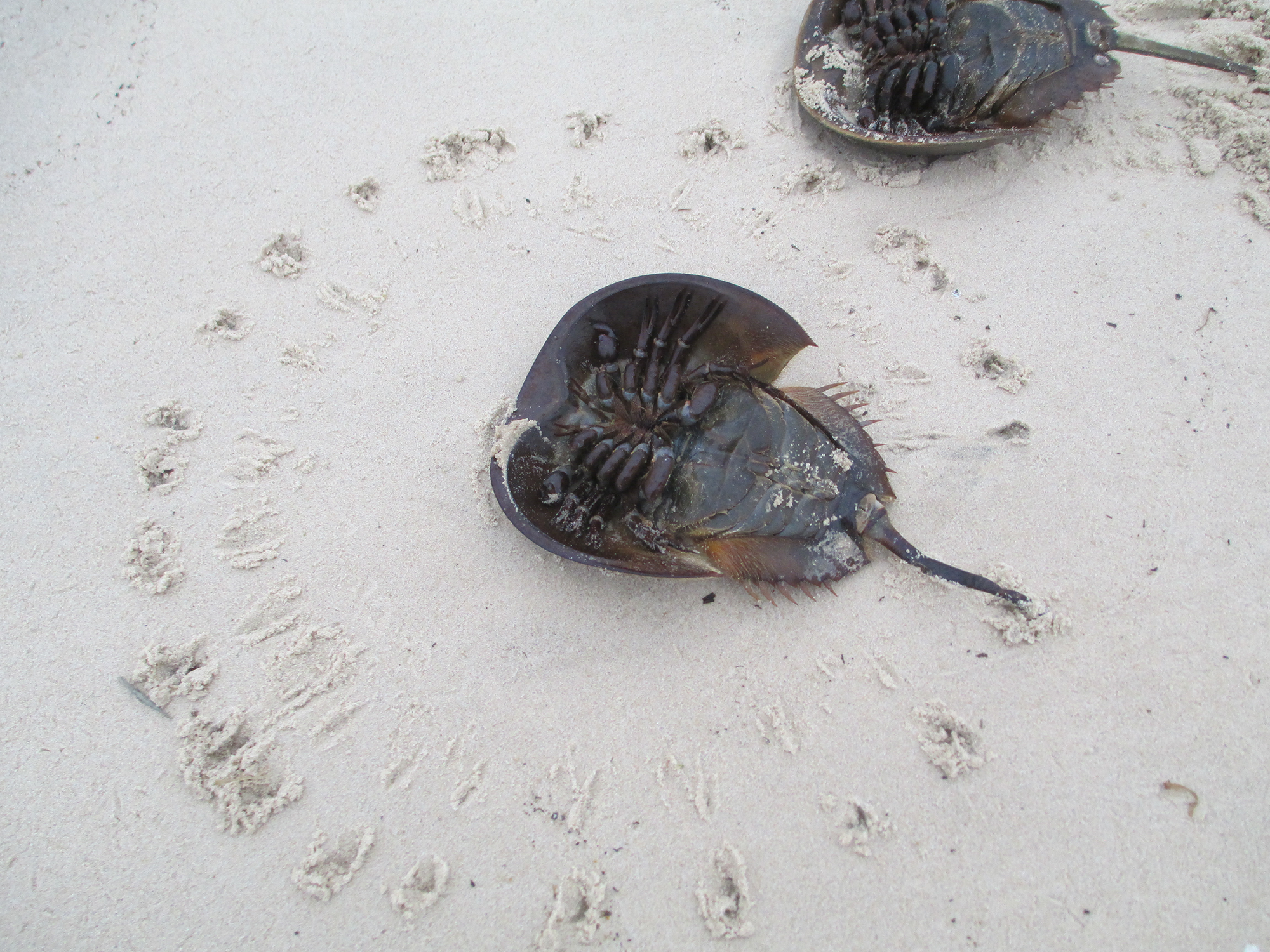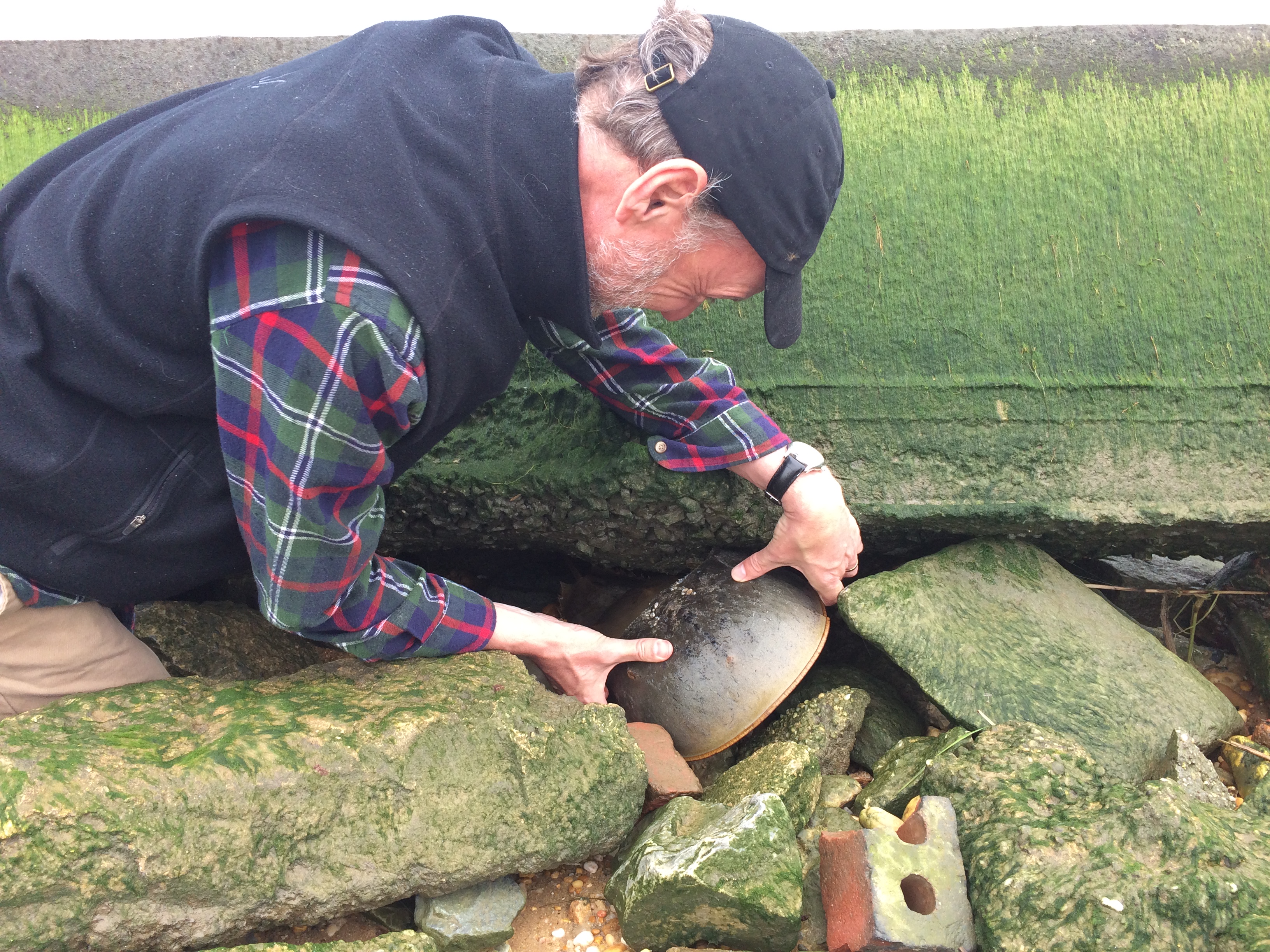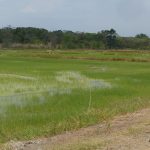At WHSRN’s oldest designated site, volunteers in gloves and knee-high boots stroll the beach by headlamp, bending every few feet to turn over a struggling horseshoe crab. Right-side up again, the horseshoe crab quickly makes its way back to the water. The volunteers move from sand to rubble, climbing carefully over concrete, rebar, and even old kitchen sinks to free crabs stuck in crevices.
The site is Delaware Bay, and these volunteers are part of a program called reTURN the Favor, a project of ten partner organizations to rescue overturned or imperiled horseshoe crabs stranded on New Jersey’s Delaware Bay beaches. This year volunteers conducted 847 walks from mid-April to mid-July, rescuing 131,024 crabs on 18 beaches!
Several species of shorebirds sync their spring migrations with the spawning of horseshoe crabs, whose high-calorie eggs are their primary source of fuel as they make their way to the Arctic to nest. Delaware Bay hosts the largest spawning concentration of horseshoe crabs along the Atlantic coast, making it a crucial stopover site for Semipalmated Sandpipers (Calidris pusilla), Sanderlings (Calidris alba), Ruddy Turnstones (Arenaria interpres), and the endangered rufa subspecies of Red Knot (Calidris canutus rufa). But due to over-harvesting and habitat degradation, Delaware Bay’s horseshoe crab population has declined by 90% over the last 15 years.

An overturned horseshoe crab. Photo: Laura Chamberlin.
With the support of the WHSRN Executive Office and Delaware Bay partners, reTURN the Favor is engaging the local community to reduce one cause of horseshoe crab mortality — strandings. About 10% of the spawning population can be stranded during a typical spawning event – even more when high numbers of crabs converge with stormy weather and king tides. The number of volunteers continues to grow, and each of the four years of the program has rescued more crabs than the year before. This year the number of rescue walks increased by 60%.

As infrastructure crumbles to the rising tides, horseshoe crabs get stuck in the rubble that is left behind. Photo: Laura Chamberlin.
As they share their passion and knowledge with family and friends, these volunteers become ambassadors for horseshoe crabs and migratory shorebirds, building a community of people ready to take action. With every crab turned, volunteers are able to help ensure Red Knots and other shorebirds will find food when they land at Delaware Bay.
Volunteers play a critical role in the conservation of sites across the WHSRN network. How are you using volunteers to expand stewardship of your WHSRN site? Send us an email (whsrn@manomet.org) or share your story with other WHSRN sites on social media (Don’t forget to tag @WHSRN!)
For more information on reTURN the Favor, participating partners, and volunteers, visit returnthefavornj.org.






